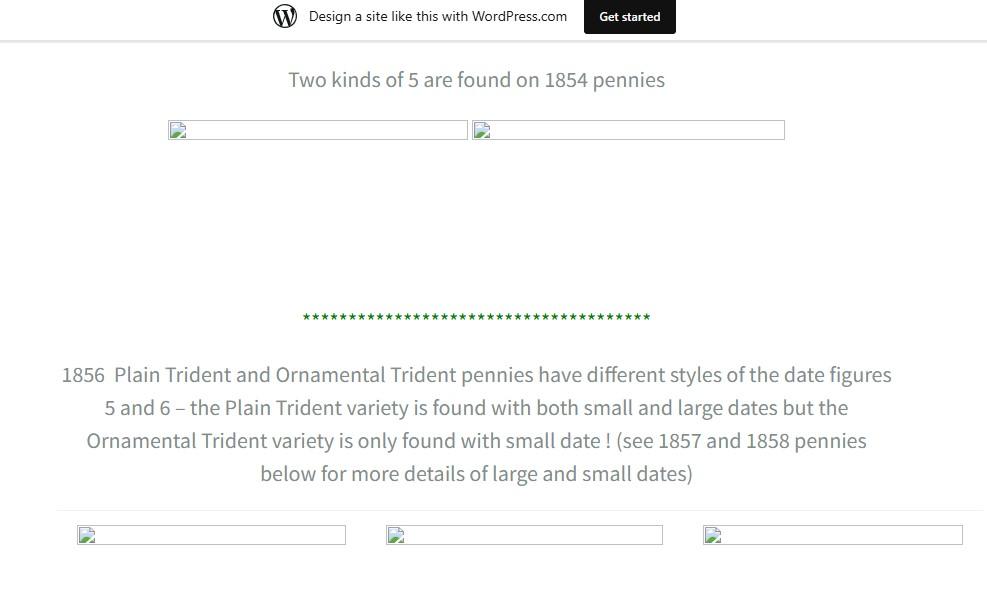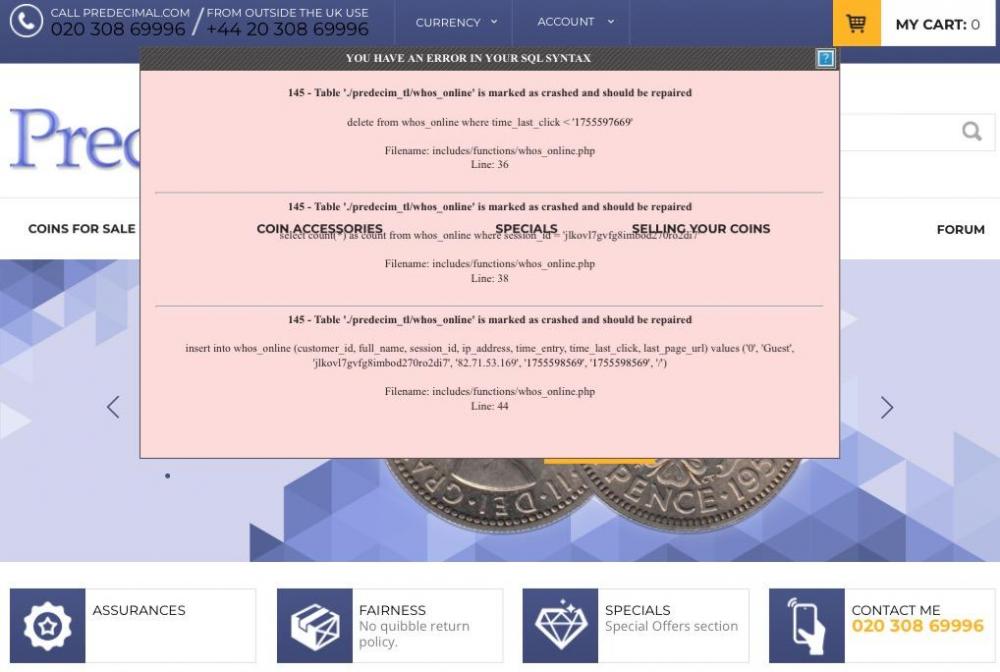-
Posts
504 -
Joined
-
Last visited
-
Days Won
30
Content Type
Profiles
Forums
Events
Downloads
Store
Gallery
Articles
Everything posted by Martinminerva
-

1956 Thin Flan Thruppence, not Gurnsey
Martinminerva replied to DrP's topic in British Coin Related Discussions & Enquiries
Would need to see a picture. An awful lot of so called "thin flan" 20thC coinage is post mint damage/tampering as the coins have been submerged in acid either deliberately or else in acidic soil conditions before being discovered as detector finds. I myself have unearthed many such pieces. The giveaway signs are that the surfaces are mottled, stippled or porous where the acid has eaten away constituent parts of the metal alloy. If the surfaces are anything different from a normal circulation piece, then I would fear that is what you have... -

Shilling Grading / value
Martinminerva replied to Peter bliss's topic in British Coin Related Discussions & Enquiries
Silver is doing well for scrap price at the moment on the back of gold, so this sixpence would scrap at between £1.00 and £1.20. Don't spend it all at once!! It has no extra numismatic value in this lowly condition. -
Yes - definitely a lamination fault caused by gas bubble trapped in the original molten metal mix.
-

Forbidden error when posting attachments
Martinminerva replied to Paddy's topic in Forum technical help and support
If you could, please! Newbie suggests a little greenness or inexperience, I fear... -

Forbidden error when posting attachments
Martinminerva replied to Paddy's topic in Forum technical help and support
Me too! All seems to be ok - and this'll be my test post just to see if things work with a random coin picture too. If all is good, jolly well done, Chris !! -
Not a penny as it is dated. Can't determine denomination without other measurements ideally weight, but certainly diameter.
-

Elizabeth I 3 Farthings...or Threehalfpence ???
Martinminerva replied to Citizen H's topic in British Hammered
Yes, definitely a penny. Both three half pence and three farthings would be dated. -
Perfectly legit.
-
I must say I have to agree with Coinery - whilst there were many high quality contemporary forgeries, it really does look pretty genuine; don't know offhand what a correct weight should be, though... One other possibility is that it is actually genuine and that some foreign matter got mixed into the molten silver when the blanks were made and it is this that has subsequently made the missing sliver of surface silver fall off during its life, a bit like a lamination flaw. To be absolutely definitive, it would need to be seen in the flesh by someone competent.
-
A very good quality silver plated/clad forgery, unfortunately. The area of damage is where the silver surface has been broken away, revealing the base metal (a copper alloy) underneath.
-
Good very fine.
-

Halfpenny ID check
Martinminerva replied to mrbadexample's topic in British Coin Related Discussions & Enquiries
Can you post a link, Bob? -

Florins, Shillings and Misc .... on going sort out.
Martinminerva replied to Citizen H's topic in Free for all
Flan lamination flaw, yes, but double strike no - you mean instead clashed dies, thus imparting part of Viccy's face to the reverse die and then all subsequently struck coins. And the vertical bit by her nose is a corresponding clash from the edge of the shield on the reverse. I suspect the misformed G is also the result of the clash with whatever letter from the reverse legend corresponds with it. All interesting, but nothing really abnormal or a genuine error here as die clashes are very common in the Victorian series and lamination occurs as a result of trapped gas bubbles in the metal mix for the blanks. -

Issues on Richard's penny website
Martinminerva replied to Paddy's topic in Forum technical help and support
Indeed, those pictures are missing, as are large / small dates just below. Haven't trawled through other pages yet to see if more is missing... Screenshots of what I see: -

Issues on Richard's penny website
Martinminerva replied to Paddy's topic in Forum technical help and support
It's loading OK for me at the moment - I access it from a bookmark I have had for quite a while. Maybe a broken link from somewhere if you are trying to follow links? -

Issues on Richard's penny website
Martinminerva replied to Paddy's topic in Forum technical help and support
Hear hear! And/or a book... -

1862 E in ONE over ???
Martinminerva replied to Bronze & Copper Collector's topic in Confirmed unlisted Varieties.
Agreed - just a die crack. They often are seen affecting legend letters emanating from the rim nearby - I guess that was a point of weakness or die stress. -

Forbidden error when posting attachments
Martinminerva replied to Paddy's topic in Forum technical help and support
My word! The picture uploaded!! -

Forbidden error when posting attachments
Martinminerva replied to Paddy's topic in Forum technical help and support
Yes - when just trying to look at @Chris Perkins's website where he has coins for sale, all sorts of errors come up. Wonder if that's connected to the issues on this forum? I'll try to paste in a screenshot, but given the fault here often prevents attachments, I am not optimistic... -

Forbidden error when posting attachments
Martinminerva replied to Paddy's topic in Forum technical help and support
Has any progress been made with a fix for this? It's been quite a while now... -
Definitely contemporary counterfeit. But they are collectable in their own right by many...
-
Not corrosion, but deposits (grease and general filth) caused by storage in PVC or similar coin album/pockets. Often this is removeable and in this instance the deposits look very minor so should be easily removed with a bit of judicious cleaning/wiping.
-

Halfpenny ID check
Martinminerva replied to mrbadexample's topic in British Coin Related Discussions & Enquiries
It is a 4+C - extra leaf in third group down. -

London Coins and Live Bidding
Martinminerva replied to VickySilver's topic in British Coin Related Discussions & Enquiries
There's more die pair misidentifications than just two! A poor show - those claimed to be rarities are not and aren't worth anything approaching their estimates! Wonder if they've got a new "expert" cataloguer?!






